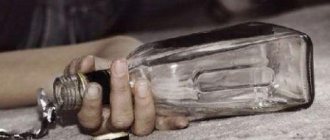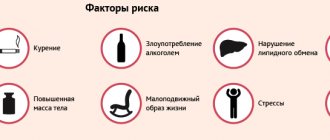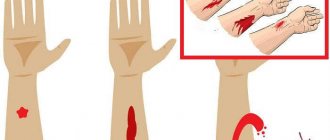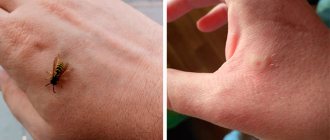The number of non-venomous snakes is many times greater than the number of individuals with a venomous apparatus. However, if you still go into nature, there is a small chance of encountering a poisonous snake. A meeting with such an individual can threaten serious problems for a person. Therefore, it is worth knowing how to distinguish a poisonous reptile from an individual that does not pose a danger. It is also important to know why a snake bite is dangerous and how to provide first aid to the victim.
The most poisonous snakes
Any unfamiliar snake should be considered obviously poisonous, but it is advisable to study the signs of harmless and poisonous snakes before going on a hike. For example, it is distinguished by two bright yellow spots in the temporal region of the head.
The amount of poison that a poisonous snake releases during a bite is disproportionately greater than the amount of poison that a poisonous insect can release during a bite, and therefore snakes are much more dangerous than spiders, scorpions and other poisonous animals.
The most dangerous snakes for humans are:
Cobra. Some poisonous snakes from the family of asps (lat. Elapidae) are called cobras. A cobra, when attacking, is capable of making a throw equal to a third of the length of its body. Before committing an attack, she raises a third of her body vertically, inflates her hood, and, emitting a hiss, slowly sways in different directions.
Taipans (lat. Oxyuranus) are very poisonous Australian snakes from the family of asps, which include only two species: the fierce snake (lat. Oxyuranus microlepidotus) and the taipan (lat. Oxyuranus scutellatus). These are quite large snakes. Their bite is considered very dangerous, even the most dangerous among all modern snakes living on Earth.
Viper. The common viper (lat. Vipera berus) is a poisonous snake from the genus of true vipers, and is the most common poisonous snake in Eurasia, in particular in central Russia. It has different colors in detail - gray, black, but mostly brown tones with a characteristic zigzag pattern on the back. The bite of a viper is very painful, but rarely leads to death.
After wintering, vipers usually appear on the surface of the earth in April - May. In summer, burrows of various animals, voids in rotten stumps and between stones, bushes, compacted last year's grass, and hay serve as shelters for vipers. You can also encounter a viper at the water's edge, as these snakes swim well. Vipers can settle in abandoned buildings, under piles of old building materials.
The black mamba (lat. Dendroaspis polylepis) is the most poisonous snake of the African continent. It can be found in savannas and woodlands of Angola, Uganda, Zambia, South Africa, Botswana, Kenya, Zimbabwe, etc. In addition, this snake has a very bad reputation. It is considered the fastest (speeds up to 20 km/h) and aggressive snake in Africa.
Gyurza. The viper has a large, thick body, colored grayish-sandy and reddish-brown, with transversely elongated spots along the back. The viper, threatening to throw, arches the front part of its body in a zigzag manner.
The Malayan krait (lat. Bungarus candidus) is a very dangerous snake from the adder family. Extremely unfriendly. It lives in Australia, South Asia and the islands of the Malay Archipelago. Its poison is fatal and primarily affects the human brain. Death can occur quickly and even without paralytic symptoms.
Sandy efa. The efa is golden-sandy in color, large white spots appear all over its body, a light zigzag is drawn on its side, and on its head you can see a peculiar pattern reminiscent of a flying bird or a cross.
The harlequin or eastern adder (lat. Micrurus fulvius) is a poisonous snake that lives in northeastern Mexico and the southeastern part of the United States. The owner of a bright color with characteristic red, black and narrow yellow rings. The bite of this snake is very dangerous to human life. If help is not provided in time, a person can die within 20-24 hours.
Any unfamiliar snake should be considered obviously poisonous and consult a doctor immediately after being bitten.
What to do if bitten by a snake: 10 tips from a herpetologist and snake catcher
“The snake is smooth, the viper is velvet”
Alexander Ognev has just returned from the upper reaches of the Volga. On the border of the Moscow and Tver regions, he caught frogs for his pet snakes. His apartment has been reminiscent of a real zoo for four decades now. One room is completely dedicated to enclosures, terrariums, and aquariums. There are about 70 snakes alone. He is especially proud of non-venomous snakes, which with their “shirts” disguise themselves as poisonous ones. While I was getting frogs for my pet snakes, I also caught a couple of vipers for the Moscow Zoo.
“My vision is no longer good, but I feel snakes intuitively,” says the herpetologist. “We caught those who hissed and gave themselves away.” I probably missed another 30 or so that were silent. Now it is no longer the season for catching, the grass has grown, the snakes, having warmed up in the sun, run away quickly.
— What poisonous snakes are found in Moscow and the Moscow region? Who should we be afraid of? - I ask the naturalist.
— The only poisonous snake that lives in the Moscow region is the common viper. It is also called fire viper and marsh viper,” says Alexander Ognev. — Among all the snakes in the world, it has the most extensive range - the area of distribution: from Great Britain and northern Spain to Lake Baikal. Most of the range is in Russia. We can say that this is the most “Russian snake”. The common viper can also be found in Siberia. The rivers there flow from south to north and are a carrier of heat.
— Can a viper be confused with any of the non-venomous snakes?
“In the same territory, perhaps a little to the south, there lives an ordinary one. It is black or dark gray. At the base of its head it has two spots - yellow, gray, white, orange or pink. There may be snakes without spots. Sometimes they are such a dark gray color that the spots blend into the general background and are not visible. The grass snake has smoother scales, so it shines in the sun. And the viper is like velvet, it has a comb on every scale.
The grass snake is a fast-moving snake; when in danger, it curls up into a tight ball and hisses. If he sees that the danger has not passed, he can pretend to be dead. At the same time, it emits a terrible odor reminiscent of garlic. For this purpose it has special anal glands.
“Vipers and snakes prefer different biotopes - habitats, vipers - the edges of swamps and clearings, and areas near rivers and lakes,” says Dmitry Vasiliev, in turn.
- What about the copperhead?
— This snake belongs to the family of colubrids. It is not dangerous for humans,” explains Alexander Ognev. — The place closest to our strip, where it is very rarely found, is the south of the Tula region. The copperhead lives in the mountains and steppes. Its diet is based on fast lizards. Unlike the viviparous lizard, which lives everywhere in our Moscow region, the sand lizard incubates its eggs in the sand, and therefore gravitates to forest-steppe and steppe zones.
— Can we say that in recent years the population of snakes in the Moscow region has increased?
— On the contrary, there are fewer and fewer snakes in the Moscow region. These are people who are “creeping away”. More and more so-called inconvenient land is being distributed for summer cottages - land unsuitable for agricultural work. These are tall, mixed forests, sphagnum swamps - exactly the places where vipers live. They simply have nowhere to go, which is why they catch people’s eyes more often. And the snake population is decreasing. Roads are being built, construction is actively underway, forests are being cut down, thereby reducing the places suitable for wintering snakes.
— What places should you avoid to avoid encountering a viper?
— In the spring they are close to their wintering areas. And wintering grounds for vipers can be quite widespread. For example, Nikolsky’s vipers overwinter in numbers of 2 thousand,” says Dmitry Vasiliev. - Thus, in the spring there can be a lot of snakes in a small clearing. And then, after molting and mating, they spread out. According to research, females usually migrate close, up to 800 meters, and males can crawl up to 11 kilometers. In the fall, they crawl to the places where they spent the previous winter.
In spring, when there is little sun, vipers can be found in some open places. And in summer they can be seen early in the morning and in the evening. Usually, encounters take place at the interface between environments: a swamp - the edge of a forest, a mowed part under a power line - the edge of a forest, garbage on a summer cottage - a vegetable garden. Vipers do not just like forests or open fields; they are there only as migrants. But the permanent places where they spend the night are associated with shelters; these should be shaded places where they can hide - holes, heaps of branches, and so on.
- So there are no vipers in the dense forest?
“They need to be able to warm up somewhere in the open.” If this is a forest, then there should be a clearing nearby.
— What are the most “snake” areas of the Moscow region?
“These are the Savelovskoe and Volokolamsk directions,” says Alexander Ognev. — Near Volokolamsk the viper has now been practically knocked out; near Dmitrov and Iksha they still remain. A sufficient number of outbreaks have been preserved in the area of Taldom and Dubna.
- I will agree. Traditionally, there are a lot of snakes in the Savelovsky direction, near Konakovo and Verbilki,” says Dmitry Vasiliev. — Also in the Shatursky direction, in the Dmitrovsky district. At one time, between the “119th kilometer” and “Temp” platforms, I caught 40 vipers in half an hour.
- Is it true that the viper does not attack a person first?
— First of all, I would like to note that Russia has a very safe environment. It greatly discourages our compatriots,” notes Alexander Ognev. “That’s why I’m not at all surprised that in Cambodia only Russian tourists are stabbed with sea urchins, because not a single European would think of stepping on a sea urchin. Or stick your fingers into the crevices of the coral to see if a moray eel is hiding there. A huge number of dangerous animals live further south. Take Turkey, where there are not only poisonous snakes, but also poisonous spiders, fish, and jellyfish. In central Russia, one should take it as a common rule: do not go into the forest barefoot or in shorts. And the worst thing there is not a viper, but a tick, which can give you a whole bunch of diseases. And the mortality rate from the viper is very low. She doesn't chase people, she never attacks herself. This is a rather cowardly creature; in case of danger, it will try to run away. The only thing is, if you come across a pregnant female, it will be difficult for her to quickly disappear, she will curl up into a ball, begin to hiss and defend herself. What are our people doing? They start hitting her in the face with a slipper, and the snake, accordingly, bites their leg. Then they say, “A snake attacked me.” In fact, they were the ones who attacked the viper.
I know several places in the Moscow region where local residents and vipers coexist perfectly. Snakes have their own “patch”, they do not leave this territory, there is an excellent food supply there, full of rodents and frogs. And the villagers, accordingly, do not interfere in their snake “state” and do not disturb the reptiles.
You have to be careful when picking berries and mushrooms. Before you step into the grass, move a stick across it. But there is no need to hit the bush with a stick. There were many cases when mushroom pickers accidentally picked up a snake, lifted it with a stick to their face, then were horrified: “A viper jumped on me.” She can't jump 1.5 meters! The viper can throw upward a maximum of 10–15 centimeters. Sneakers, high boots or boots can serve as protection. The snake does not bite through them; the length of its teeth is 4–5 millimeters.
- If a viper sees a person, it will follow him. Before he steps on her, she will make her presence known by hissing,” says Dmitry Vasiliev, in turn. - If the viper is heated, you won’t even see it, it will run away so quickly, it will only rustle the grass. Bites occur when people try to play with the viper, pick it up, or accidentally step on it or sit on it.
— At what time of day are snakes active?
“They usually go out half an hour before dawn and take positions where they can bask in the sun. “They sunbathe” until 9 am, and when they warm up, they go into hiding, says Alexander Ognev. — A snake can be seen during the day. These are so-called fattening snakes that are in search of food. The second peak of snake activity begins after four o'clock in the afternoon and lasts until sunset. My latest discovery of a viper was around 10 p.m.
“No tourniquets or immobility: let the poison dissipate”
— What to do if the viper does bite?
- Firstly, when you go into the forest, you must remember that you are the enemy there and that you are going into someone else’s territory. And you need to dress appropriately. Secondly, you need to put at least suprastin in your pocket. The fact is that the danger from a bite, according to my observations, is largely due to an allergic reaction to the poison. Poison is a protein, and different people react to it differently. Death is usually associated with anaphylaxis. Swelling of the mucous membranes of the mouth and nasopharynx can develop within 2 minutes - and the person dies.
I don’t have any allergies to viper venom; some of my snake-catching friends had swelling in their face and nasopharynx, and some had difficulty breathing. To avoid this, you need to take some kind of antihistamine with you to the forest: tavegil, claritin, cetrin, pipolfen. For example, I always had diphenhydramine with me. This medicine, in addition to everything, also has a powerful sedative effect - it relaxes and relieves pain, which is important when bitten by a snake.
If you are not a small child, but an adult or teenager, a viper bite is unlikely to be fatal for you. Yes, it hurts, you will get sick. Teenagers or women can spend a week in bed. Men, being more massive creatures, cope with a viper bite in three to four days.
(Alexander Ognev knows what he’s talking about. Poisonous teeth sank into him 91 times. 20 years of work in the serpentarium had an effect. Plus, during the capture, the herpetologist was touched by: green rattlesnake, copperhead, steppe viper, Caucasian viper, common viper, bamboo keffiyeh, etc.)
— How correctly do those who try to suck out the poison from a wound act?
“It has more of a psychological effect.” It’s a good lesson, but don’t forget about placebo (from the Latin placebo, a substance without obvious medicinal properties, used as a medicine, the therapeutic effect of which is associated with the patient’s belief in the effectiveness of the drug. - Author). Of course, you won’t suck out any poison there, but your mouth has occupied itself with something and is already distracted from the perception of the bite. We have to hear a warning - the main thing is that there are no wounds or caries in the mouth. All this is nonsense! I remember how a colleague of mine, who was present at a performance by visiting guest performers in Sochi, volunteered to drink snake venom that he had drunk right on stage. Everyone around, including the fakir, was speechless. And Igorek, a professional with a capital P, knew well that poison only works if it gets into the blood. Even if there are sores or cuts in the mouth, it is difficult to imagine the rapid absorption of protein into the body. Viper venom is not an ointment that is absorbed into the skin.
“In the French Legion, for example, soldiers are given a special locking syringe with which they can suck out snake venom,” says Dmitry Vasiliev. “It is believed that somewhere around 10–15% of the poison can be removed in this way. But it should be noted that snake venom contains a special enzyme - hyaluronidase, which instantly removes the venom from the bite point. And it is better not to do any traumatic effects, in particular cuts, treatment with some chemical agents such as potassium permanganate. Because of all this, you can subsequently limp for the rest of your life, lose a finger, and so on.
— Someone tries to apply a tourniquet when bitten by a snake. This is right?
- There is no need to do this. It’s just better if the poison disperses throughout the body,” says Alexander Ognev. “It’s bullshit that the poison can be stopped somewhere.” One of the enzymes contained in viper venom causes tissue necrosis. If you apply a tourniquet, the likelihood of necrosis increases, gangrene begins - and you will have to amputate the part on which you applied the tourniquet. Any intoxication is measured in milligrams of poison per kilogram of weight of the bitten person. I believe that when a snake bites you, the whole body should “work”, and not the part where the snake bit you. Let the poison dissipate. General poisoning will be more noticeable, but overall it will pass much faster and easier. I had a record of four hours.
When bitten by a snake, most guides advise staying still. I did the opposite. Firstly, I drank alcohol, alcohol has a wonderful property, it works as a vasodilator. Secondly, I kept moving. A snake bit me on the left hand, I worked intensively with my hand, the same way when blood is taken from a person’s vein. My hand swelled very quickly and I began to feel dizzy. After two hours, severe itching began, and this is usually a signal that the poisoning has ended and the body has begun to fight. After 4 hours the swelling began to subside.
- What about the recommendation to fix the bitten hand in a bent position with the help of a cloth thrown over the neck?
- You definitely need to keep this in mind when you sleep. On the first night after a bite, many people cannot sleep due to severe pain. Most often, a snake bites a person on the hand. It swells so much that it hurts even to touch it. At night, you need to build a pyramid out of pillows and place the bitten hand 15–20 centimeters above the heart; if it is lower, it will be much more painful due to the rush of lymph and blood.
— When bitten by a snake, do you need to drink more fluid?
- This is true. I went through various options, watermelon came first, followed by beer and coffee. All of them have good diuretic properties. If you are in the forest, make tea and throw in a handful of lingonberry leaves. Lingonberries also have a pronounced diuretic property. The fact is that poison is eliminated from the body only through the kidneys. Therefore, we need to write, write and write again. And for this you need to constantly refill your body with water.
— Why do they say: if you are bitten by a snake, never drink alcohol?
“Our people, for the most part, don’t know how to drink alcohol in small portions, and after drinking a fair amount of it, they lose touch with reality and become disoriented. For myself, empirically, I found the right dose, which is 50–70 grams of vodka. No more, alcohol should work as a superficial vasodilator. I also used fresh water with the addition of dry wine. The acidic environment disinfects, you never know what kind of E. coli you pick up from the local pond.
“There are those who apply half a cut onion to the bite site. Does this have any effect?
- There is no use in doing this. There is no more poison at the site of the bite, says Dmitry Vasiliev. — There is such a demonstrative experience. The spots on both sides of the guinea pig were shaved down to bare skin and poison tinted with methylene blue was injected into one point, and saline solution with methylene blue into the other. The area of the spot where the poison was injected was a hundred times larger than the place where the saline solution was injected. That is, the conductors in the venom instantly lead it away from the bite point. It “flies away” to the nearest lymph node.
Unless there is an allergic component, the viper's venom is not strong enough to cause death in an adult. But if within an hour after the bite there is a severe headache, vomiting, diarrhea, bleeding from the mucous membranes, clouding and loss of consciousness, a feeling of flashing light in the eyes, the person must be urgently taken to the hospital.
Herpetologist Alexander Ognev was bitten by poisonous teeth 91 times. Photo from personal archive.
“You cannot use a serum prepared from the venom of other snakes against a viper bite.”
- What do you say to those who, going to the forest, take with them an antidote - ampoules with anti-snake serum?
“The fact is that allergies to serum are more common than to poison,” says Alexander Ognev. “We must remember that this is not a vaccine, this is serum that is obtained in biofactories. To make it, snake venom is injected into the body of a horse or mule. They give an injection containing poison in a dosage significantly lower than the lethal dose. Then gradually increase the dose. Antibodies accumulate in the animal, then blood is taken from it, blood cells are separated, and pure plasma is used to prepare serum. Such horses and mules are worth their weight in gold. I want to warn you: you cannot use serum prepared from the venom of other snakes against a viper bite.
And it’s better if it’s administered to you in a medical facility. Doctors will first do a test, an injection with a minimum dose and look at the reaction so that there is no redness. Then the serum will be injected subcutaneously, but not with one injection, but eight to ten, in small doses, injected into the bite site. I have never injected serum in my entire life. I repeat: if you are bitten by a common viper, if you are an adult, it is not necessary to do this.
— If you go to the nearest hospital, can you be sure that they will have anti-snake serum in stock?
“I don’t know what their situation is now.” Previously, the pharmacy where you could buy the serum was guaranteed to be located on Tishinskaya Square. The whey was produced in Stavropol and Nizhny Novgorod. Now you can buy it online. (“MK” checked and made sure that there are more than enough offers. An ampoule with serum against the venom of the common viper costs 450–550 rubles. The shelf life is no more than a year, it must be stored in the refrigerator. It is freely sold to individuals. The courier is ready to deliver the serum to any point.)
“There may not be serum in small rural hospitals, but it is always available at the Poisoning Center of the Sklifosovsky Institute of Emergency Medicine, at the Filatov Children's City Clinical Hospital No. 13, as well as in regional hospitals,” says Dmitry Vasiliev.
— How does viper venom affect cats and dogs?
- About the same as for a person. Dogs of large breeds of the Malos group are sensitive to snake venom, says Dmitry Vasiliev. — Dogs most often receive a bite in the area of the nasolabial triangle, that is, when they sniff a snake. Swelling develops quickly and dogs may have difficulty swallowing food or water. And, for example, hunting dogs and dachshunds tolerate snake bites quite easily. In cops and drathaars, symptoms of poisoning spontaneously disappear after 6 hours, which does not exclude future complications associated with the kidneys. Large breed dogs may experience heart murmurs, wheezing, and pulmonary edema. Therapy for dogs is the same as for humans. In the hospital they are injected with anti-snake serum. And then they carry out symptomatic treatment: if the pressure drops, they raise it, “drip” antihistamines and painkillers.
— Could other types of poisonous snakes appear in the Moscow region due to warming?
“Due to warming, other species may appear, but we must take into account that the formation of a species takes about 5–6 thousand years,” says Alexander Ognev. — The closest point where there is a viper is the spurs of the Talginsky ridge, northwest of Makhachkala. The northernmost point where there is a cobra is the desert and the Ustyurt plateau of the same name in the west of Central Asia, at the junction of the borders of Kazakhstan, Turkmenistan and Uzbekistan.
—Can a snake bite while in water?
— The viper swims, and quite well. Another thing is that it does not live where there are large bodies of water. And she easily swims across small rivers,” says Alexander Ognev. - In the river, if you grab it with your hand, of course, it can attack. But this is not her native element; in the river she is thinking about how to get away from you.
“I know for certain two cases when a snake bit a person in the water while trying to throw it away,” says Dmitry Vasiliev. - This is despite the fact that in order for a snake to bite, it must take a certain position. In order to throw the front third of the body forward, it needs some kind of solid support. And water is not very convenient for this. If someone mentions a snake in the water, then it is most likely a snake. They swim very willingly.
— Can a water snake be found in rivers near Moscow?
“The closest point to the Moscow region where there are water snakes is the Saratov region,” says Alexander Ognev. — Some diversity appears, starting from the Tula region. Nikolsky's viper, a copperhead that is not poisonous, already appears there. Closer to Volgograd you can meet the steppe viper and yellow-bellied snake. South of Volgograd - Sarmatian and patterned snake. The further south you go, the more species of snakes there are. But still this cannot be compared with the tropics, subtropics, the Caucasus and the Far East.
— How can you protect your garden plot from snakes?
— In the morning, about 8 o’clock, when the sun is just starting to get hot, walk around your territory and inspect everything carefully. Usually snakes warm themselves and are motionless. In order not to encounter a viper at your dacha, ensure hygiene of the area and remove construction waste, says Dmitry Vasiliev. — If you see a faded snake skin, reclaim these places and fill up all the holes.
“It is impossible for the garden plot to have deposits of firewood, piles of boards, pieces of roofing felt left after repairs,” explains Alexander Ognev, in turn. — Few people are interested in neatly stacked firewood. But piled up, rotten boards and piles of garbage are an ideal place to hide rodents and lizards. A viper can also climb there and feel completely safe. Regularly mow the grass around your garden plot and it will lose its attractiveness to lizards, shrews, voles, and vipers.
Symptoms of a poisonous snake bite
The bite of a non-venomous snake leaves 2 stripes of thin small scratches on the body. The bite of a poisonous snake also leaves 2 stripes of scratches, but at the end of each strip there is a puncture from the fangs. At the site of a poisonous snake bite, a local reaction of the body is usually observed - hemorrhagic edema and necrosis occurs.
Read also: Rescue of a drowning person on water: rules
It should be taken into account that weakened people, allergy sufferers, children and women demonstrate a higher sensitivity to poison. In addition, the closer the bite is to the head, the more dangerous it is.
When bitten by a poisonous snake, in addition to bite marks and swelling, the human body may have the following symptoms:
- First, a slight burning sensation, which turns into increasing pain at the site of the bite;
- The skin in the area of the bite takes on a reddish-bluish tint.
- Numbness of the bitten area appears. The pain can spread throughout the entire limb, sometimes moving to the torso;
- Muscle weakness appears and coordination of movements is impaired (staggering gait, difficulty standing on your feet);
- Breathing is depressed, becoming increasingly rare, shallow and difficult.
- The pulse is frequent and weak. The pressure decreases.
- The skin becomes pale;
- Speech and swallowing disorders occur;
- Strong salivation and irresistible drowsiness are possible;
- Body temperature rises to 38-39°C;
- A fever sets in. Dizziness, nausea, vomiting appear;
- Vision is impaired (double vision);
- Periodic loss of consciousness is possible. Sometimes agitation and convulsions.
Viper bite
Snake size. Vipers usually reach a length of 50 - 75 cm. The larger the snake, the larger its poisonous glands, the greater the amount of poison released. Size and weight of the victim. Thus, a dog and a child are more sensitive to the effects of poison than an adult, due to the faster and more complete absorption of the poison in the body of the victim with a small volume and mass.
The amount of poison released. The viper attacks only living targets, mainly mice, voles, and sometimes moles and lizards. She hunts from ambush, waiting for the prey to approach and biting it with lightning speed. Then he calmly awaits the action of the poison. Small animals die, usually not having time to move more than a few meters away. The snake swallows prey from the head, whole, thanks to its sliding jaws. It should be noted that the snake spends its venom very sparingly, trying to preserve its reserve whenever possible. Some bites may be harmless to humans and do not require any treatment. Such bites are called “dry”. However, without being able to determine “on the spot” the amount of poison injected, it is necessary to take immediate measures after any snake bite.
The victim's health status. People or animals suffering from heart ailments, tired dogs can fall into a state of shock, often aggravated by panic and rapid heartbeat, which accelerate the spread of poison throughout the body.
Bite site. Usually these are the hands of people and the paws of dogs. A hunter who places a gun on the ground, makes a resting place, or lifts a stone to build a fireplace always runs the risk of being bitten, especially in rocky areas and bushes. Dogs, being lighter, cause less strong shaking of the ground when moving, than they can take a snake by surprise by approaching it too close. A dog approaching a viper may be bitten in the face, nose or tongue, which often causes rapid death due to swelling of the respiratory tract.
The reaction of the victim, his environment and the speed of assistance. Thus, a person who does not panic and remains calm, who tries to gain time by saving movements and takes all measures to quickly transport him to the nearest hospital, will slow down the absorption of the poison and significantly reduce the complications of the bite. A dog bitten by a snake should be carried in your arms to avoid any acceleration of blood circulation, but in a car it should be kept motionless.
First aid for a poisonous snake bite
1. Stay calm!
If you have a hot head, you can harm the victim more than the snake caused damage. 2. When bitten by a poisonous snake, the first action should be vigorous suction of the poison from the wound.
Punctures made by poisonous teeth quickly heal, therefore, before sucking out the poison, they must be “opened”. To do this, grab a fold of skin at the site of the bite and remember it with your fingers, but not too tightly. The punctures usually open and small droplets of liquid appear in their place. Now you can start suctioning.
This must be done in the first seconds. To do this, you need to squeeze the tissue surrounding the wound with your teeth, squeezing it out and sucking it out at the same time. Quickly spit out the extracted liquid. This procedure should be continued for 15-20 minutes.
This procedure will remove 20-50% of the poison from the victim’s body. If 3-5 minutes have passed after the bite, then this procedure becomes completely useless, because During this time, the poison has time to disperse through the bloodstream and lymphatic ducts.
If the victim is alone, he must suck out the poison himself.
Do not be afraid to help someone who has been bitten by a snake; it is not dangerous, even if you have sore teeth or abrasions in your mouth. Firstly, you immediately spit out the poison, and secondly, the amount of poison that can enter your body through the mouth is so small that it will not have a toxic effect. All experienced snake catchers suck out venom for themselves and for their comrades, and there has not been a single case of the person suctioning being poisoned. However, you should remember about the danger of transmitting various infections through blood or saliva, therefore, after sucking out the poison, you should rinse your mouth with water or a weak solution of potassium permanganate.
3. Disinfect the wound to prevent additional infection from entering the body. To do this, you can use iodine or brilliant green.
4. Apply a sterile bandage to the disinfected wound.
5. Next, it is necessary to provide the person who has been bitten by a poisonous snake with absolute peace and immobility. Especially, under no circumstances should you move the affected limb. To do this, you can even apply a splint or tape it to your healthy leg. If your hand is bitten, then secure it in a bent position.
The victim's independent movement is unacceptable! The more a person moves, the faster the poison spreads throughout the body.
6. It is very important to give the patient plenty of fluids, because... it helps remove poison from the body. Warm, weak sweet tea or water is best for this.
7. To prevent, or, in extreme cases, weaken an allergic reaction, it is recommended to take antihistamines, for example: Suprastin, Tavegil.
8. It is necessary to quickly take the bitten person to the hospital so that the doctor can administer anti-snake serum. It is worth noting that if possible, i.e. for example, in addition to the bite victim and the person who will provide first aid, there is someone else nearby, ask him to call an ambulance to the scene of the incident. This will speed up the administration of the antivenom and reduce the risk of serious harm to the health of the snake bite.
It is advisable to find the snake and deliver it to the doctor for identification in order to eliminate any assumptions in the course of treatment of a person bitten by a snake.
9. In case of emergency, before arriving at a medical facility, perform artificial respiration and closed cardiac massage.
Read also Mushroom poisoning! First aid, symptoms, prevention
At the doctor
In any village paramedic station, in any city hospital and clinic, in urban and rural ambulances there is a special “Anti-viper” serum for those bitten by a viper. Its components neutralize snake venom.
The serum does not act instantly; it may take several hours for the condition to ease. The victim should spend this time in the room, under the supervision of a medical professional, at rest. It is likely that, in addition to the serum, other medications will be required to correct the symptoms that the poison has already caused.
The doctor will treat the bite site with iodine and cover the wounds with a sterile bandage to avoid secondary infection. The bite site does not require any special further care.
With timely treatment, after 5-6 days, and often earlier, all unpleasant sensations will completely disappear. During recovery, you should follow a gentle regimen and follow your doctor’s recommendations.
For a person old enough and healthy enough to walk in the forest, the bite of a common viper is not fatal. However, in case of untimely or incorrect treatment, severe complications can develop, including chronic renal failure.
What should not be done when providing first aid to someone bitten by a snake?
—Cut the bite site crosswise or cut out the affected area. Cuts from random objects (knives, glass fragments) lead to infections and damage to veins and tendons.
- Cauterize the wound with hot objects, coals from a fire, gunpowder, because The poisonous teeth of snakes reach a centimeter in length and the poison is injected deep into the muscle tissue. At the same time, a scab forms at the cauterization site, under which suppuration begins.
— It is dangerous and useless to cauterize the bite site with caustic potassium, nitric, sulfuric and carbolic acids.
- Do not apply a tourniquet above the bite site. Applying a tourniquet to the affected limb worsens the condition of the victim, provokes gangrenous phenomena (especially with bites of vipers and vipers), and increases the possibility of death.
- Drink alcohol. Remember that alcohol is not an antidote, but on the contrary, it makes it difficult to remove poison from the body, enhancing its effect.
Antidotes for poisonous snake bites
To save those who have been bitten, anti-snake serums, which are made using snake venom, are widely used. Serums can be monovalent - helping with poisoning from the venom of a certain type of snake, and polyvalent, used against bites of various species. Anti-snake serum must be administered only with a sterile instrument in strict accordance with the instructions included with the serum.
If there is serum, but there are no instructions, then inject it intramuscularly (preferably in the back area), but no later than 30 minutes after the bite.
What's dangerous about snake venom?
In addition to the question of how a snake bites a person, many are interested in what substances enter the body along with the poison? According to experts, the standard “set” of reptile venom is represented by the following substances:
- Hemolysin, the effect of which begins to break down blood cells.
- Cholinesteris. It is considered a special enzyme that disrupts neuromuscular transmission, namely its work and functioning.
- Neurotoxin. Through this component, after a snake bite, the structure and nerve tissue will be affected.
- Cardiotoxin. It is considered an extremely dangerous enzyme that damages the cardiovascular system.
Some behavioral features of poisonous snakes
In the middle zone, most venomous snakes are active around the clock. They love to bask in the sun, and can do this right on the path, on stumps, hummocks and stone slabs, and at night crawl to the fire.
When meeting a person, a snake usually tries to crawl away. Snakes (deprived of hearing) perceive approaching steps through vibrations of the ground. Vibrations almost do not propagate over soft peat litter or dug up soil, and the viper sometimes does not have time to hide in advance.
Snakes never attack without warning! The cobra's threat pose is the front third of the body raised vertically, the hood inflated, swaying from side to side, hissing, reminiscent of a sneeze, throwing towards the enemy. The cobra is capable of making a throw equal to a third of the length of its body. An irritated copperhead shakes the tip of its tail finely. In a threat pose, the efa is folded into two tight half rings, in the middle of which it slightly raises its head. Vipers and vipers, threatening to attack, curl up into a small plate, arch the front part of their body in a zigzag manner, and hiss loudly. The hissing of the viper resembles the sound of air escaping from the hole of a hand pump.
How to avoid a snake bite?
When going to places where you can encounter snakes, you must have appropriate clothing and footwear.
Protect against snake bites:
- Wellingtons; - thick woolen socks; - tight trousers, not tight to the body, tucked into shoes with a slouch.
When picking mushrooms and berries, it is better to push the grass apart with a long stick, and if you intend to pay special attention to an overgrown hummock, poke around in it with a stick before putting your hands in it.
If you suddenly notice a crawling snake, freeze and give it the opportunity to leave. If the snake assumes a threatening pose, back away slowly. Avoid sudden movements that frighten the snake! When defending yourself, you cannot put your hands forward or turn your back to the snake. If you have a stick, hold it in front of you towards the snake. Don’t run away from a snake you encounter—you might step on another one unnoticed. Stay calm in your decisions, actions, and gestures. Remember, a snake that you cannot see is dangerous; a snake that is discovered is not a threat.
Care should be taken when handling dead snakes; in some of them, the venom retains its properties for a long time. An accidental prick from a poisonous tooth can cause poisoning.
Do not attempt to catch or play with snakes unless absolutely necessary, even if they are small and lethargic in appearance. Baby snakes that have just hatched from eggs are also poisonous.
Read also Mercury vapor poisoning. Symptoms, treatment, first aid, consequences
How were snake bites treated in the Middle Ages?
People have been trying to find a cure for snake bites for a very long time, since ancient times. But it was only about fifty years ago that doctors understood how snake venom works and what needs to be done to weaken its effect. It must be remembered that no traditional medicine knew and does not know how to treat snake bites. All, without exception, “folk” remedies are at best useless, but much more often they are harmful. And until recently, scientific medicine did not know how to treat poisonous snake bites. And out of despair, she borrowed remedies from ancient ritual medicine. In Russia, where snake bites are rare, many doctors still have very little knowledge of what to do in such cases.
Medieval doctors considered cutting off a bitten limb one of the most reliable means of first aid. It is clear that this had to be done immediately after the bite, otherwise the poison spreads throughout the body and chopping off the arms and legs is useless. And there are still people who are so frightened by a snake bite that they put their hand on the nearest stump and chop it with an axe, okay if it’s just a finger. In the old days in England there was a remarkable antidote. It was believed that if the bitten person managed to jump over water, even a drainage ditch, before the snake was out of sight, he would get rid of the poison and would not die.
Is there an antidote?
Currently, there are a number of developed antivenom serums for snake bites. However, it is more advisable to use them for bites of the most dangerous individuals that live in tropical and subtropical conditions.
As for snakes living in our latitudes, the use of antivenom serum is not advisable, since after its administration a number of serious complications can form. Moreover, coping with the complications that arise is many times more difficult compared to the consequences of a bite.
The introduction of serum can provoke the following negative phenomena:
- cause a severe allergic reaction;
- disorders of the kidneys and liver;
- heart failure, which in some cases leads to death.
Additionally, it is important to note that snakebite antivenom is only effective when the serum is administered promptly and correctly. Only medical professionals can ensure this, as well as eliminate the occurrence of side effects.
In the case where, after a reptile attack, it is not possible to get help in a medical facility, the most correct thing would be to administer an antihistamine intramuscularly and a medicine that blocks the development of shock.
Actions for a snake bite: first aid
In addition to the above actions that must be performed after being bitten by a poisonous snake, remember certain points when bitten by a viper. After all, it is considered one of the most poisonous species of snakes.
- First, try to move the victim as far as possible from the scene of the incident, since there is a chance that there may have been more than one snake that bit him.
- Second, try to squeeze out the venom by pressing your hands tightly around the bite.
- Thirdly, make sure that there is no jewelry left on the arm (or leg) that was bitten by the snake: the limb will begin to swell, and the jewelry will only get in the way in the future.
- Fourth, drink plenty of fluids. This has already been mentioned earlier, but we will repeat this point. Drinking plenty of water reduces the concentration of poison in the blood.
Prevention
How can you prevent a poisonous snake bite? Hard to tell. But it’s definitely worth remembering the list of actions when meeting a dangerous reptile.
- You should not attract attention to yourself if you see a snake. One sudden movement, wave of the hand or loud sound on your part can provoke an attack.
- If you are walking in an overgrown area, use a stick to push the vegetation in front of you.
- When going on a hike, make sure that your clothes are made of thick fabric and your boots are high. Thus, when attacked by a snake, there is a chance that its bite simply will not penetrate your equipment.
- If you decide to camp overnight, choose an open area with short grass and avoid mountains and rocks.
- Provide yourself with everything you need in advance: first aid kit, medications, etc.
- Before you get comfortable in your tent or sleeping bag, be sure to shake them out: this way you will check. whether an uninvited guest got into them.
Consequences
The consequences of a poisonous snake bite for the human body depend on the composition and properties of the components of the poison found in the body.
The main components of the poison are enzymes that break down various types of tissue (hyaluronidase, phosphokinase, proteases), and toxic amino acids, proteins and carbohydrates.
Hyaluronidase - disconnects connective tissue, destroys the walls of small capillaries, increases tissue permeability to water and ions. Phosphokinase – splitting the lipid layer of red blood cells leads to their destruction.
The designated elements thin the membranes of cells containing bioactive substances (histamine, heparin, etc.), which inevitably contributes to their release and the manifestation of inflammatory and allergic reactions (swelling, redness, pain, itching).
Snake venom is carried throughout the body by lymph. Its components negatively affect the walls of blood vessels, destroying them and forming blood clots, as a result of which blood circulation and water-lipid balance are disrupted.
Medical assistance
The main help of doctors is symptomatic treatment and vaccination. Help is provided in trauma centers. Hospitalization may be required if complications may develop. The severity of the reaction depends on gender and age characteristics, the characteristics of the snake, and the duration of contact with the skin.
Even after a non-poisonous individual, a child may be recommended to be placed in a hospital to monitor the inflammatory process and prevent the development of a negative reaction. Try to remember all the details of the contact, first aid procedures, and time.











